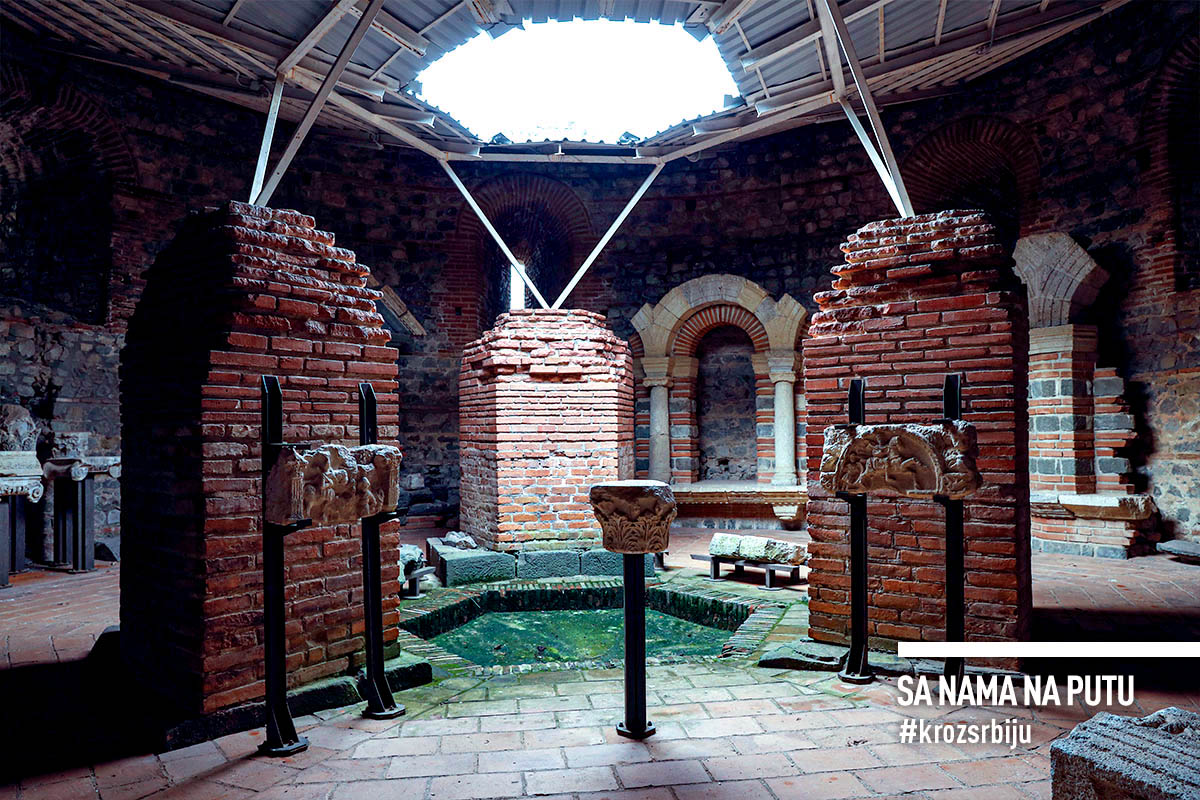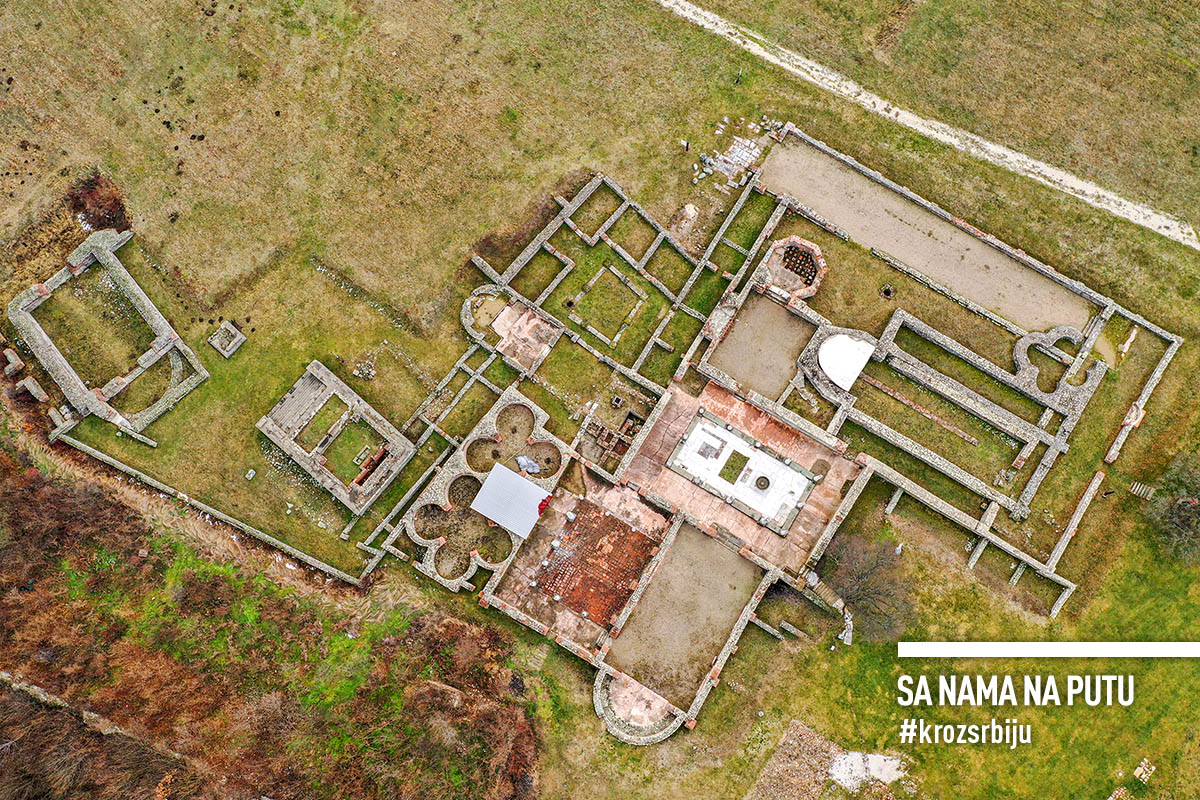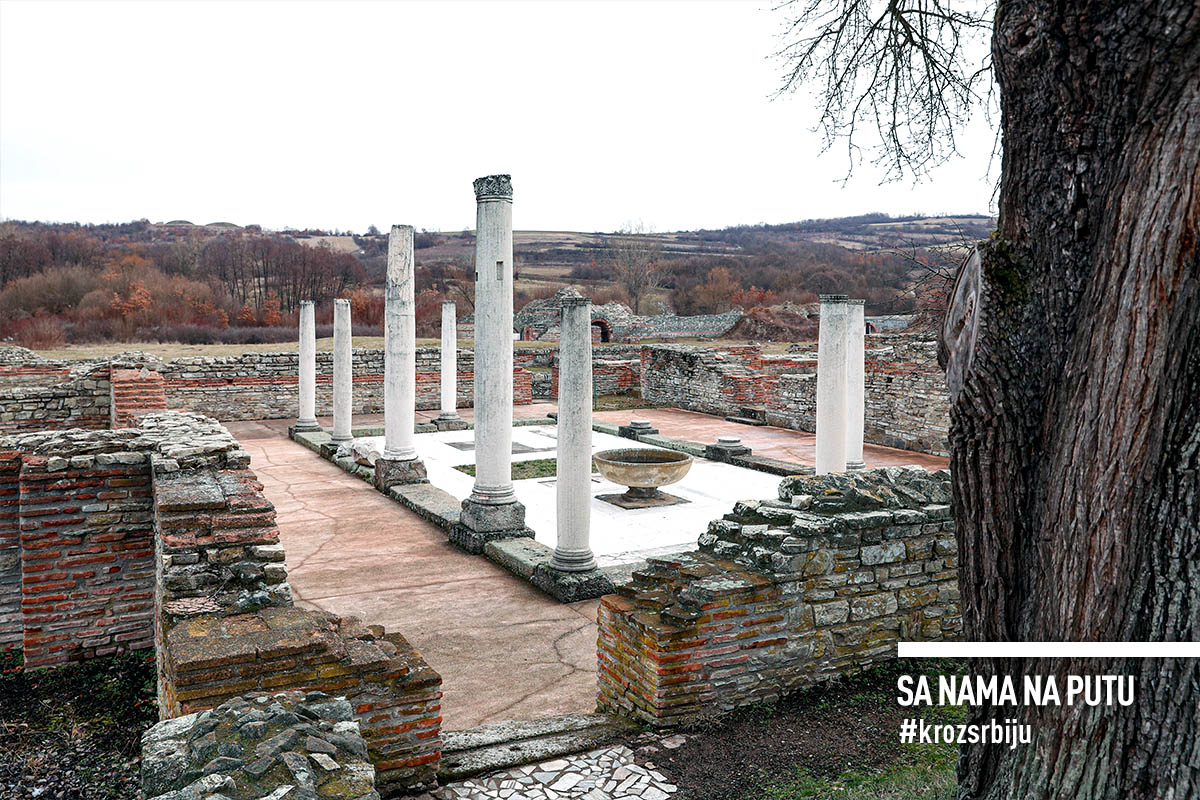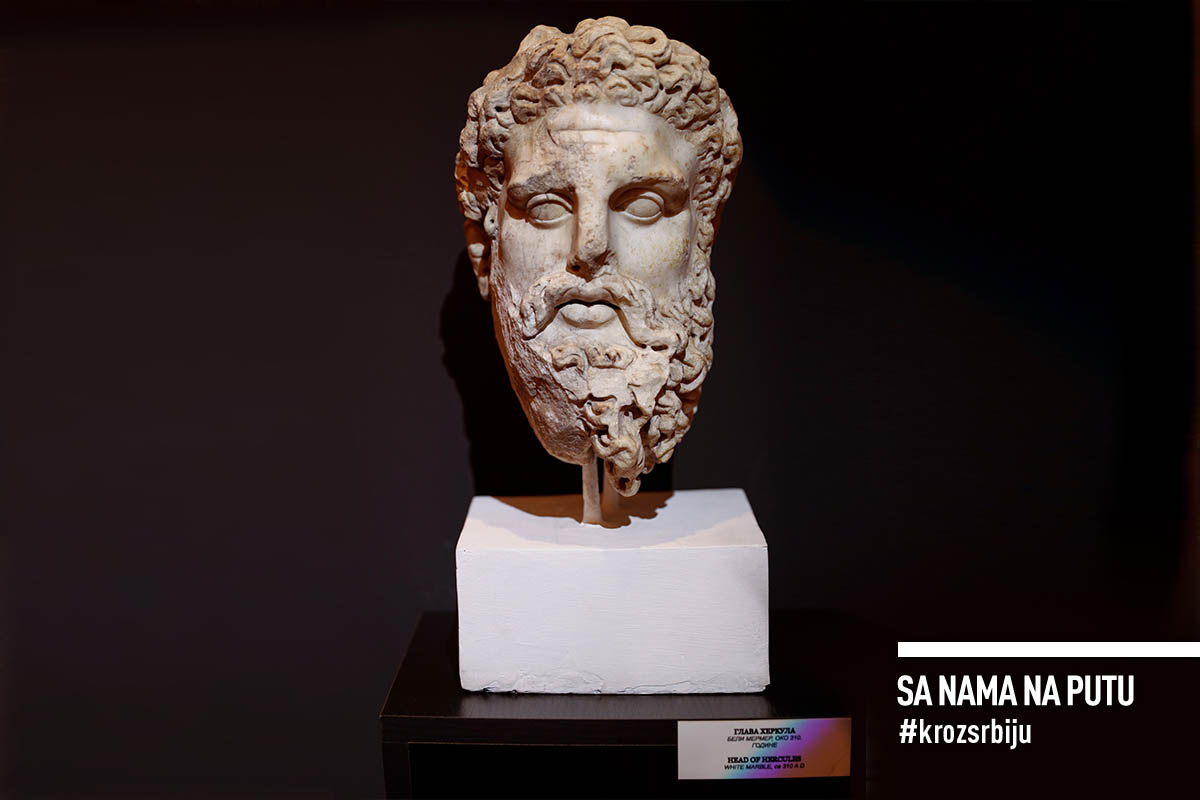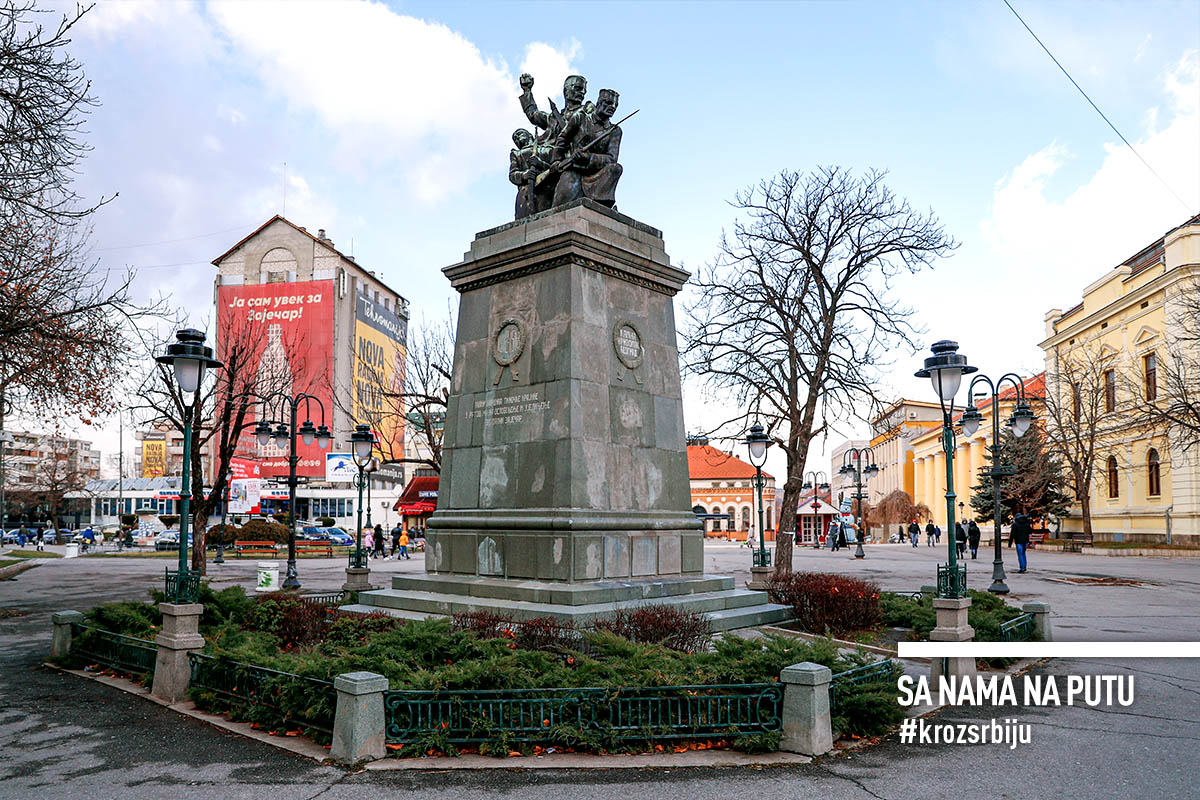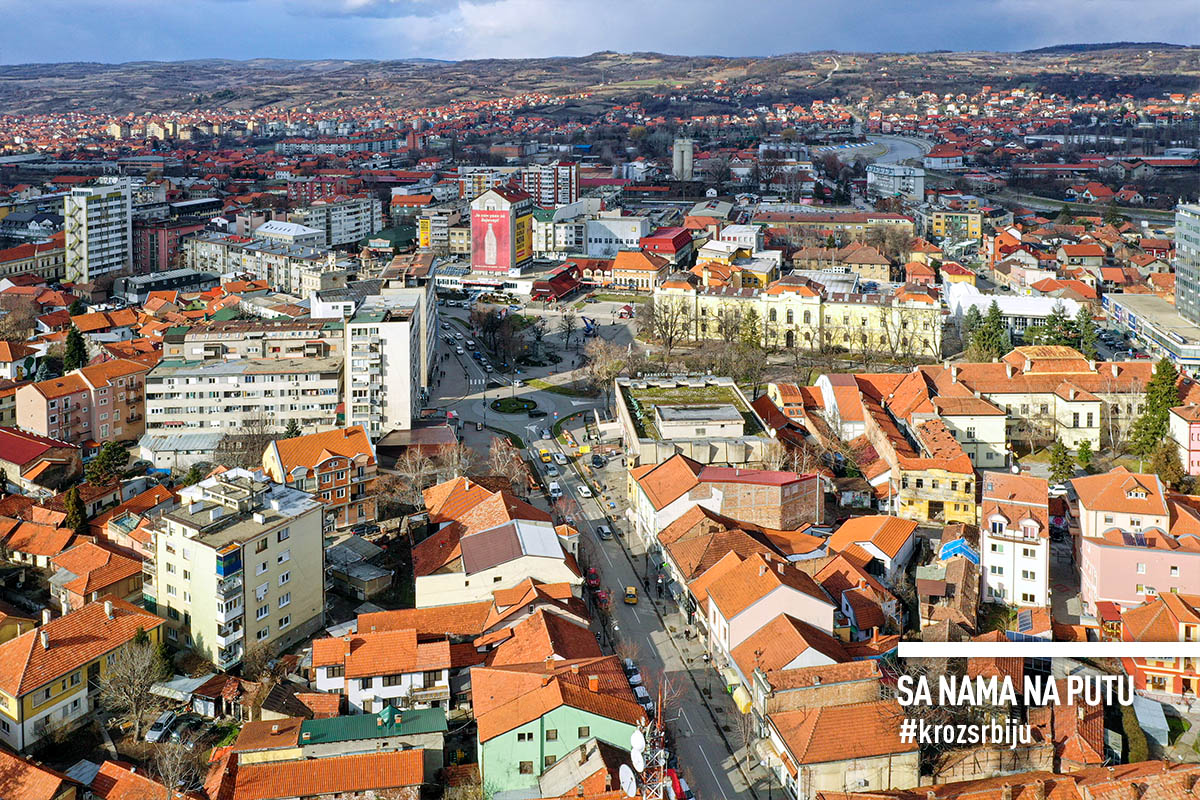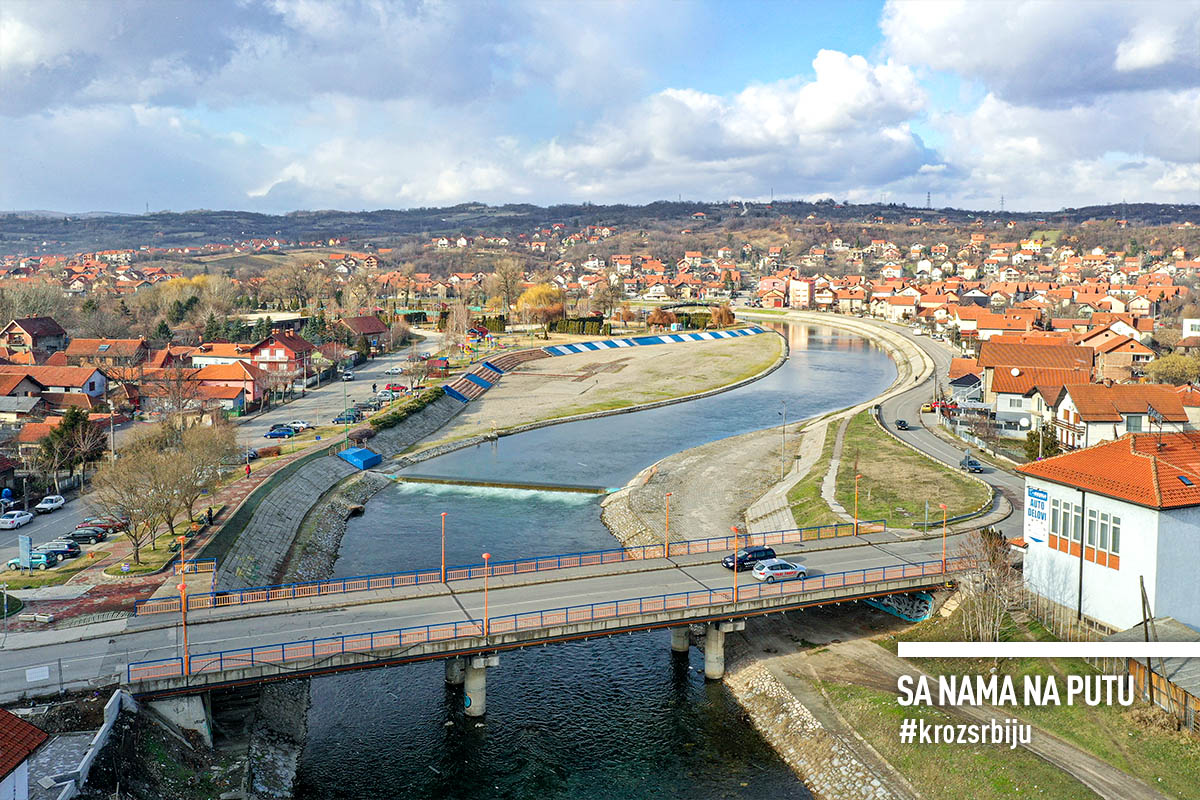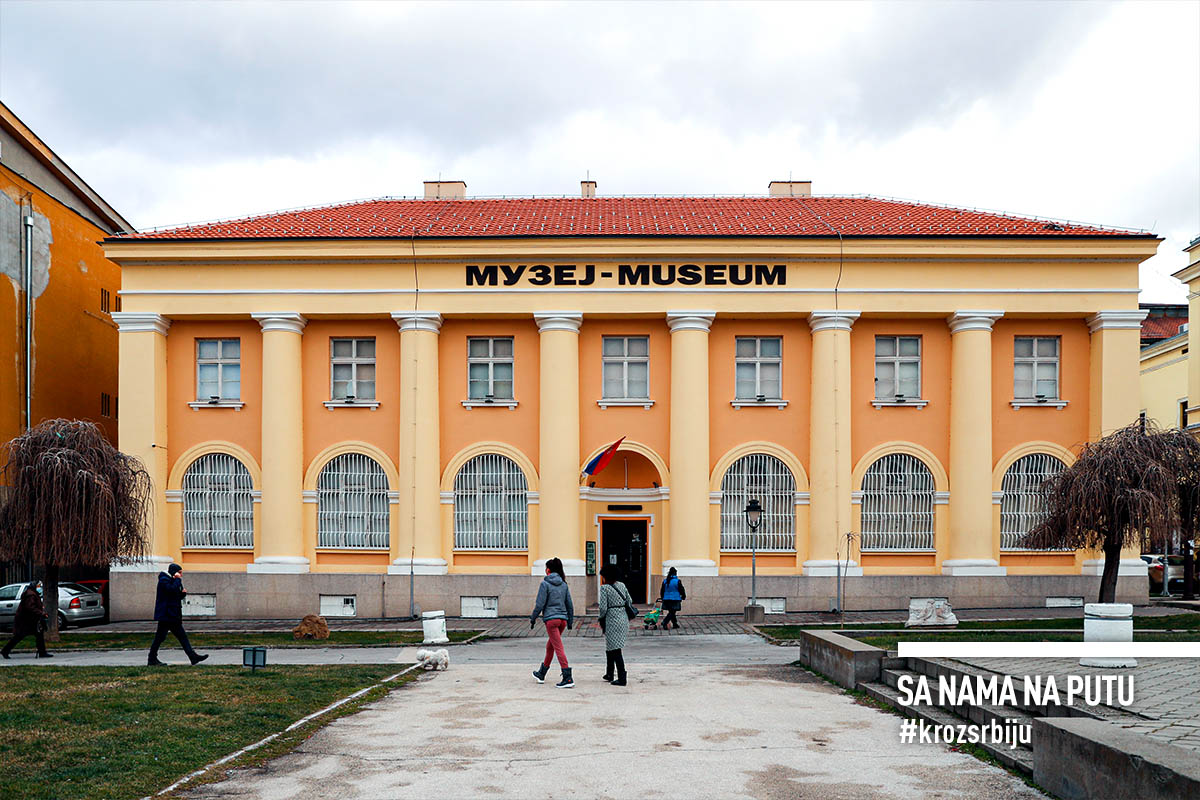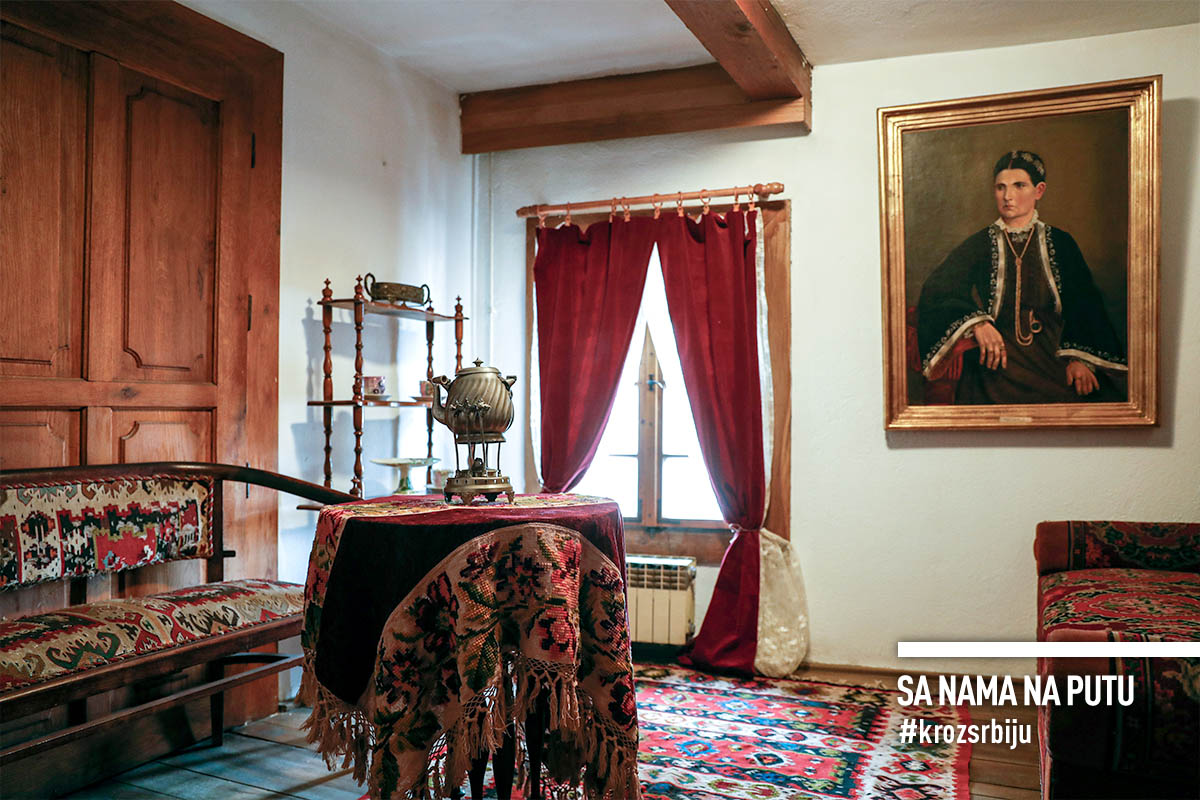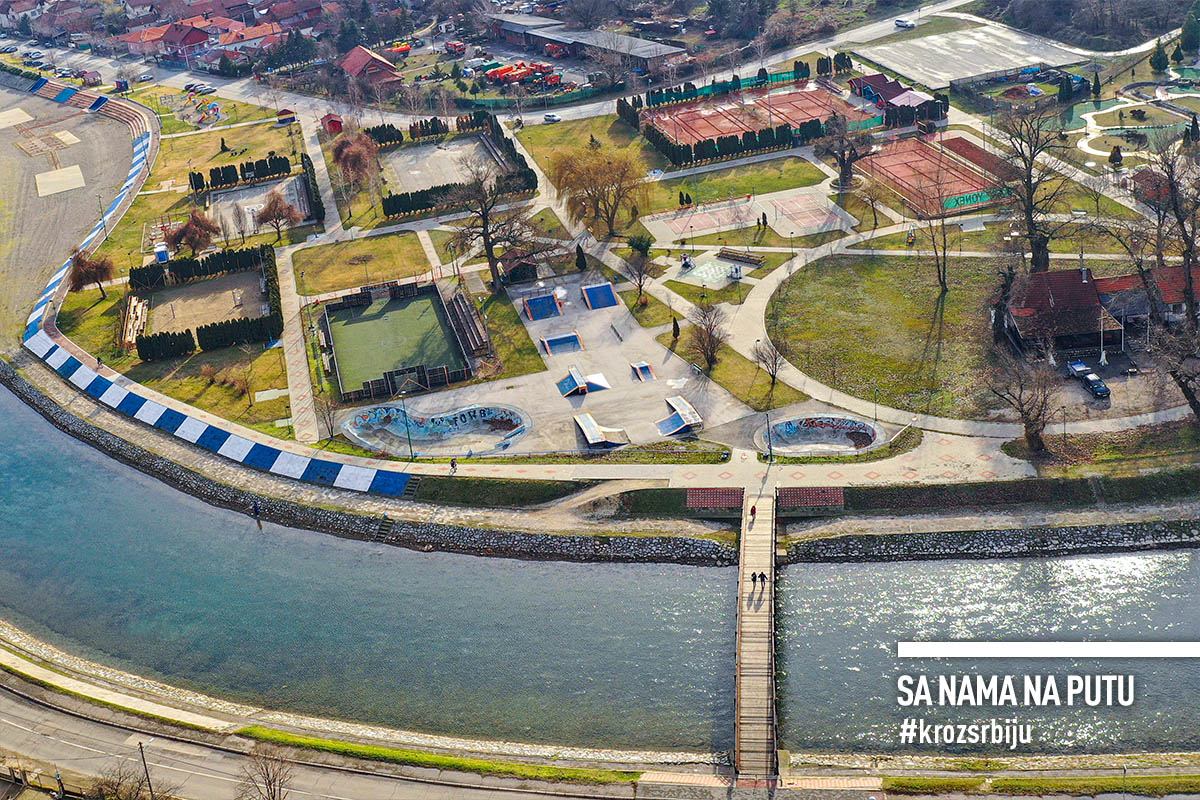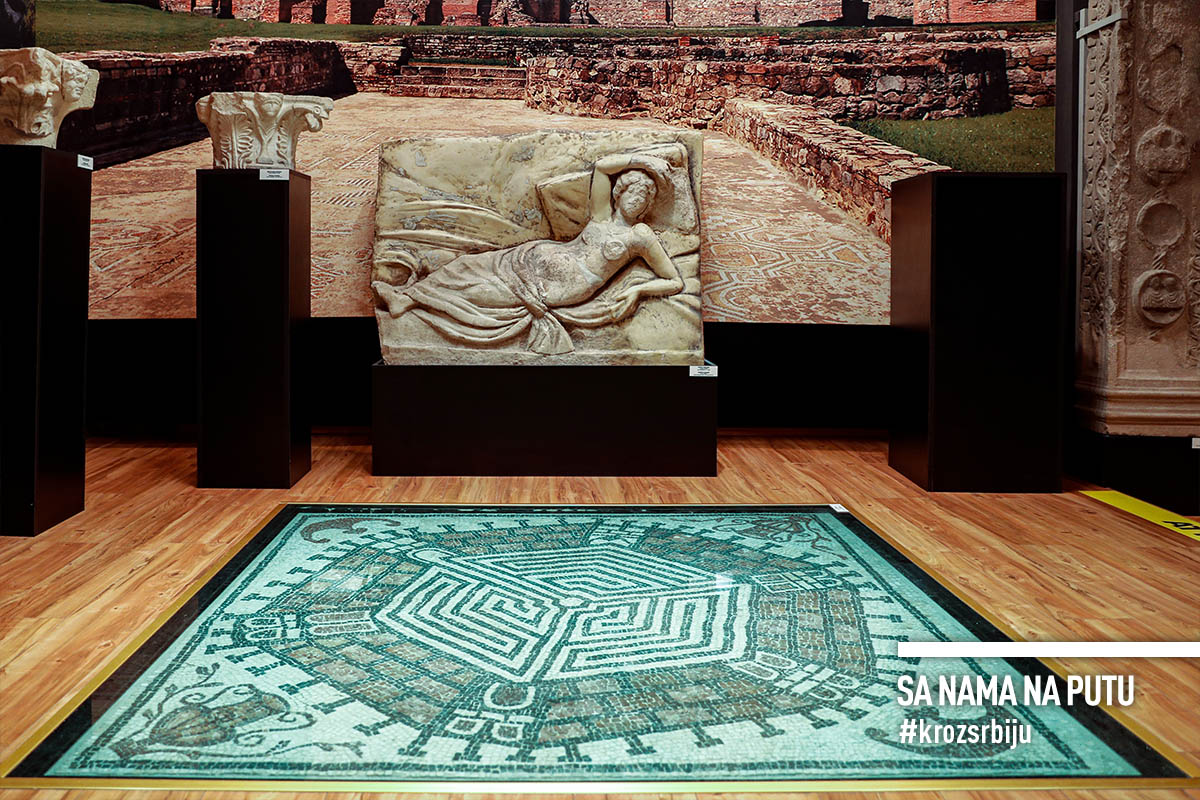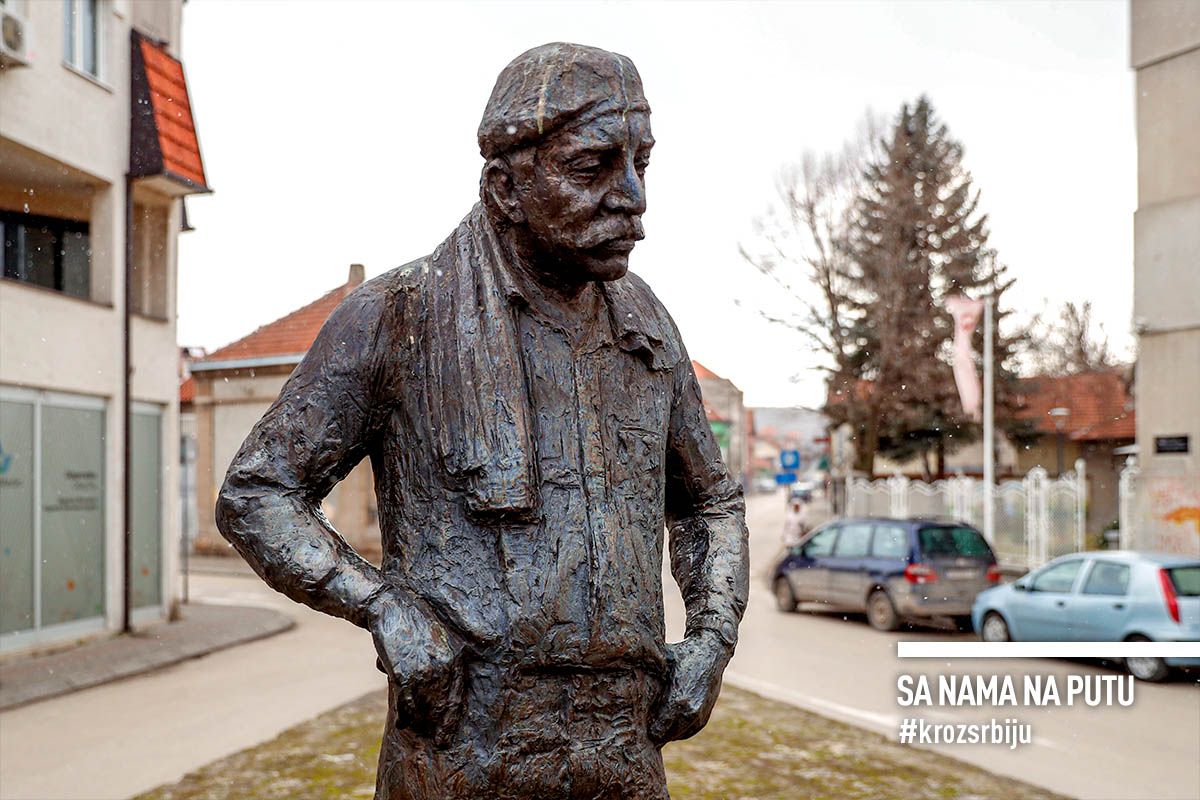Zaječar is the largest city in the Timok river valley, in southeastern Serbia. It nestled at the foot of the Carpathian-Balkan mountains, bordered by the valleys of Crni and Beli Timok rivers. It is widely known for its rock music, but also for its beer. The fastest way to get from Belgrade is on the E75 highway, and after the exits to Paraćin and Zaječar, there are about a hundred kilometers of pleasant driving through magnificent landscapes. The mystical pyramid-mountain, Rtanj, is indicated just to herald the magic of the East. As it is not very close to the main road through Serbia, it is not visited along the way, but is targeted.

Why visit Zaječar?
1. Because Felix Romuliana is a part of world cultural heritage
One of the most important archeological sites on the territory of Serbia is located in the environs of the city of Zaječar. The Roman emperor Galerius erected his residence at the end of the 3rd and the beginning of the 4th century and named it after his mother Romula. It sprawls over 6.5 hectares, surrounded by a rampart of 20 giant towers and looks more like a powerful stronghold of that time. It was to be completed by the time of celebrating the twentieth anniversary of Galerius’ reign, when he intended to abdicate and settle right there, in his grandiose court complex. However, illness prevented him, and Felix Romuliana was never completed.

Inside the walls are palaces, pagan temples, Christian churches, underfloor heating baths, and various other structures. The palace was lavishly decorated with precious stone wall cladding, sculptures and floor mosaics, which are among the best achievements of the late antiquity.
It has a turbulent history. After Galerius’ death, it was in the hands of the Christian church, destroyed by barbarians, rebuilt and turned into a fortress in the 6th century, and abandoned before the invasion of the Slavs. Five centuries later, it came to life as a Slavic medieval settlement, and during the Turkish rule it served as a shelter.
It has a turbulent history. After Galerius’ death, it was in the hands of the Christian church, destroyed by barbarians, rebuilt and turned into a fortress in the 6th century, and abandoned before the invasion of the Slavs. Five centuries later, it came to life as a Slavic medieval settlement, and during the Turkish rule it served as a shelter.

It has been included in the UNESCO World Heritage List in 2007. It is considered to be the best-preserved example of dedicated Roman palatial architecture. Landscaping work continues. The construction of a visitor center is planned, and additional excavations are forthcoming. What else will emerge from the home of the last Roman god?

Romuliana is also called Gamzigrad, after the nearby village, where the Gamzigradska Banja spa with hot springs and one of the three oldest hydroelectric power plants in Serbia, still in opertion and generating electricity.
2. Because Zaječar embraces two rivers

Not many cities have that privilege. The Crni (or: Black) Timok flows through the city and makes a confluence with the Beli (or: White) nearby, thus forming the Veliki (or: Great) Timok. But it is not named after watercourses. It is not known for sure where the name comes from. Some say that judging by the word itself, it comes from ancient Serbian „zajac“, a rabbit. Rabbit keeper, according to one legend. There will be many of them in the nearby forests. Definitely a nice interpretation. It is mentioned in the writings for the first time in 1466, when the Turkish company recorded data on the inhabitants of the Vidin pashaluq. Today it is a lovely and lively town with several small squares. Pretty clean. Several buildings stand out for their beauty – the buildings of the District Administration, the Historical Archive and the City Assembly, as well as the Church of the Nativity of the Most Holy Mother of God. Monuments have been put in place to commemorate the victims of the First World War as well as the prominent historic figures of Zaječar – Veljko Petrovic, who led uprisings against the Ottomans, politician Nikola Pašic and Zoran Radmilovic, the renowned 20th-century actor. The Timok Krajina Theater is also named after this great Serbian thespian. Exceptional edifice.

3. Because the Guitar festival is famous world over
It is one of the oldest and most important music events in Serbia. It was founded back in 1966 and soon became a real symbol of Zaječar. It is a great opportunity for young groups and performers to present their musical skills to the audience. For many musicians it was a springboard to fame. In addition to the competition programme, true rock fans enjoy the performances of long-proven masters, because the biggest names in the domestic and world music scene gave their best performance in Zaječar. The great Zaječar rhythm must not be missed. Book a few days for a serious gig in August.

4. Because the museum of Zaječar bears testimonies about the tumultuous history of this land
The story of Felix Romuliana continues in the National Museum of Zaječar. It starts on the ground floor, in state-of-the-art premises showcasing valuable excavations from the site, sculptures and two magnificent mosaics. One of them is dedicated to Dionysus. This Hellenic, eternally young god with whom Galerius identified. Here, once the Romans and the ancient Greeks were in love. We climb to the floor where two other large rooms are dedicated to Gamzigrad, and then we walk through the history of Zaječar from its early days, through war times and the inevitable Timok rebellion to modern times, and see interesting antiques and precious and unusual pieces of jewelry. Ladies have a whale of time here. A special room is dedicated to Zaječar’s celebrities – Zoki Radmilović and Nikola Pašić, whose hand cast in plaster is on display. A receptive, interesting and above all educational setting. The museum building, in the center of the city, is one of the city’s beauties and has been declared a cultural heritage edifice.

5. Because Radul-beg’s qonak is an important monument of oriental culture
Just a minute’s walk from the National Museum is Radul-beg’s residence, a monument of oriental culture. It is not known who erected it and precisely when, whether in late 18th or early 19th century. Be it as it may, in the aftermath of the liberation of the Timok region from the Ottomans in 1833, it was bought by Radul Glirogijević, a rich Serbian merchant from a nearby village, whom they nicknamed „beg“ (or bey in Turkish, which means a rich Ottoman dignitary) due to his wealth. He must have enjoyed enormously in this lavish villa. The ground floor is dedicated to cultural events, and on the first floor there is a permanent exhibition called Stari Zaječar (or: old Zaječar). Every room depicts certen topic – Arab, girl’s and Turkish room, salon, and dining room. The special artifact is a huge photographic camera from the time when people used to have themselves photographed on special occasions only. An antique album with faded pictures is also on display. And as it is already witnessing the Turkish era, the locals call it „čardak“ (from Turkish çardak coming from Farsi čārtāq, an old typical house in the Balkans).

6. Because Popova beach and Kraljevica are sports oasis
It seems that Zaječar nurtures the sporting spirit. On the coast of the Crni Timok, there is a diverse offer for professionals and recreationists – courts for various team sports, beach volleyball, outdoor chess, badminton, golf, skate park, and a health trail. The beach is arranged along the coast, so it is very lively in summer. Great place for a family and romantic walk.

Those prefering hilly areas, galavant in Kraljevica, a park-forest. Favorite picnic spot with a variety of offers throughout the year. In addition to various fields, there is a sports hall, swimming pool, football stadium, and trim track with equipment. The ski trail gives a special value to Kraljevica. The top is reached by an anchor-shaped cable car. The trail is about 650 meters long, it is illuminated so it can be whirled in the dark, and equipped with cannons for artificial snow when it is naturally stingy. What other Serbian city can be proud of its ski trail?
7. Because at “Two brothers” you eat brotherly
The locals brag that they eat well everywhere in Zaječar. We have no doubt, but we follow the recommendation of our experienced host and rush to the „Two Brothers“ cafe. Although the entrance says restaurant in original English, everything inside is tavern-like. Plaid tablecloths, and old photographs and some ethno details hung on the walls. An appetizer of various delicacies arrives for the appetizer – a selection of home-made cheeses imaginatively called two brothers’ salad, marinated zucchini, Timok salad, pastoral young cheese baked in the oven, and hot buns. We are almost full, but we can’t resist the veal baked in a special clay crockery and the spicy ribs. The food is perfect, the atmosphere is friendly, the service is brotherly and sisterly. Just like in a bar.

8. Because you save on NIS petrol by using the “Sa nama na putu” application
After the fraternal lunch, we set off on a journey of collecting impressions. We say goodbye to everything we saw with the promise that we will return as soon as possible – to absorb the beauties of eastern Serbia again and to apreciate once again the hospitality of the hosts from the Timok region.

We stop at the NIS Petrol station where we tank up with quality G-Drive fuel and take delicious Drive Cafe snacks to return home. Naturally, we collect bonus points through the “Sa nama na putu” application, which we will use on another occasion at any NIS Petrol or Gazprom refuelling stations throughout Serbia.
Practical, economical and easy, right?
